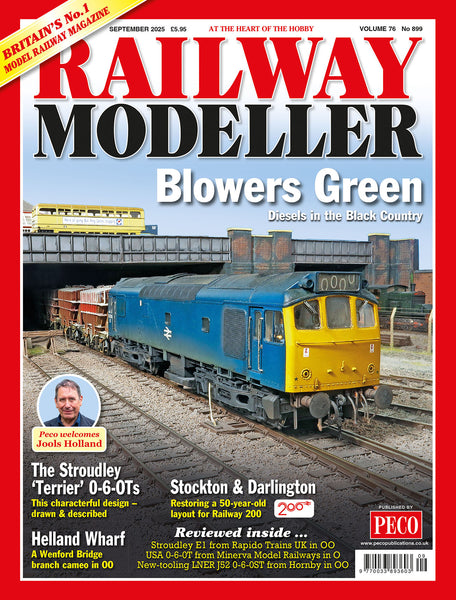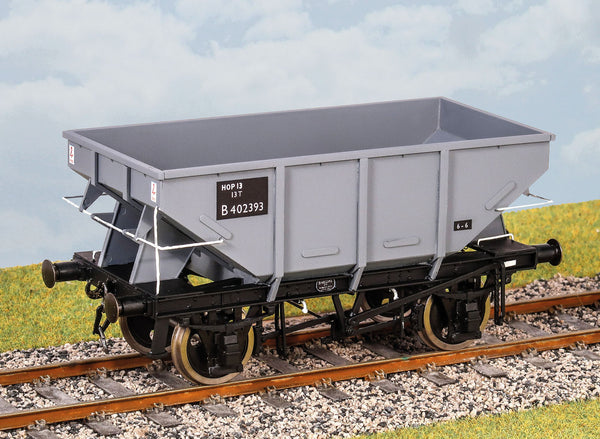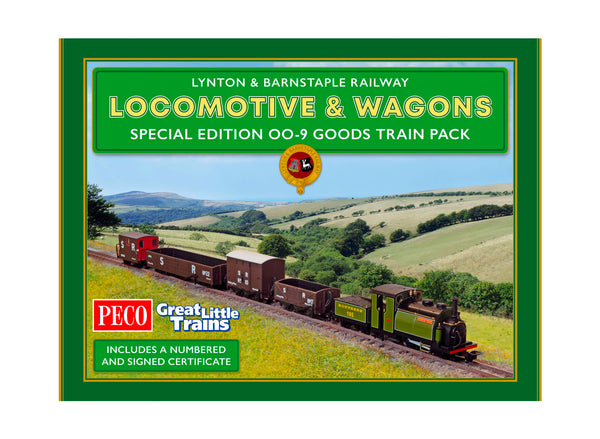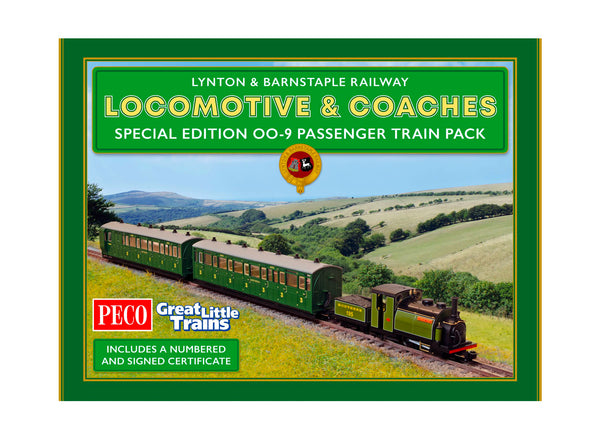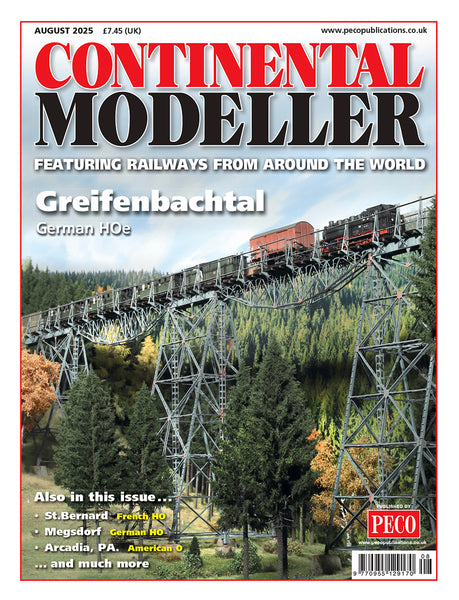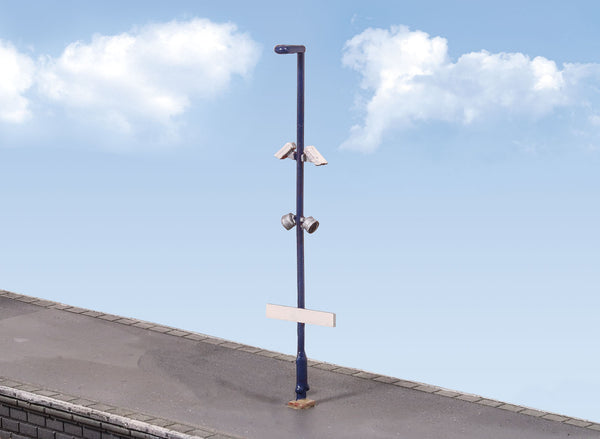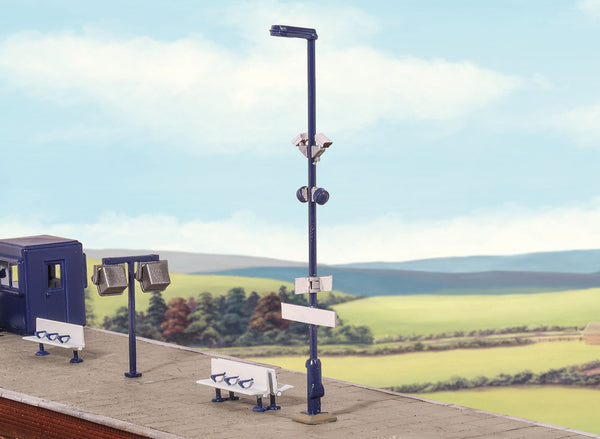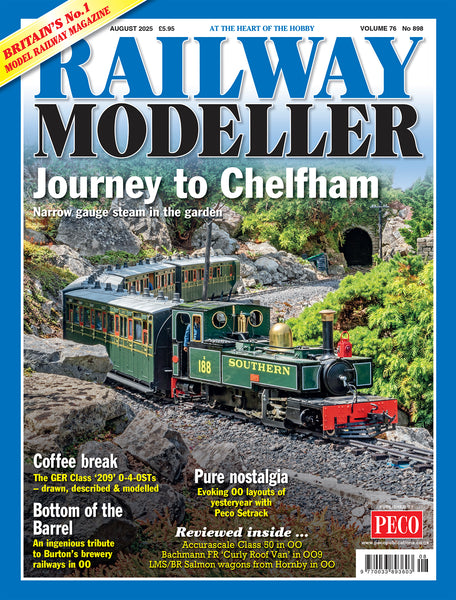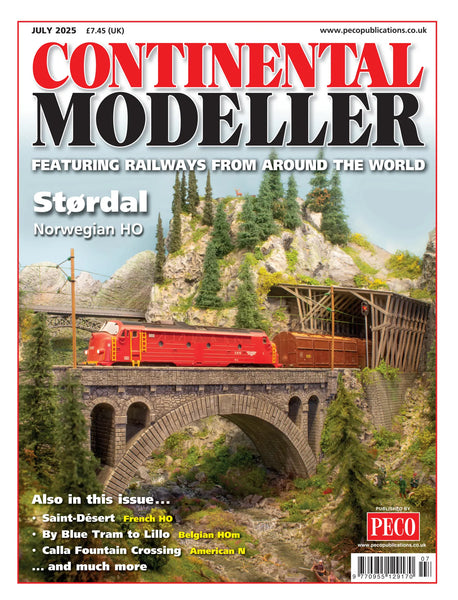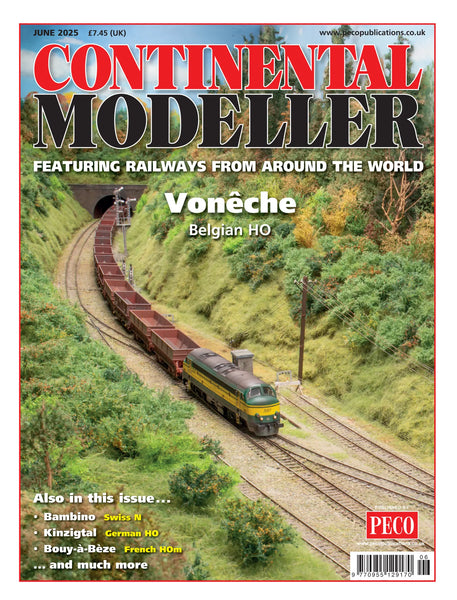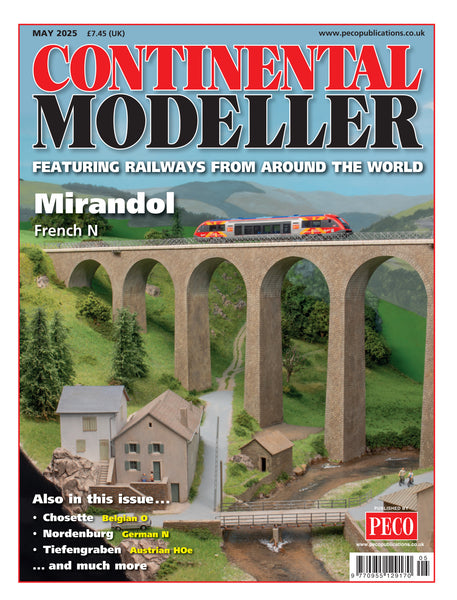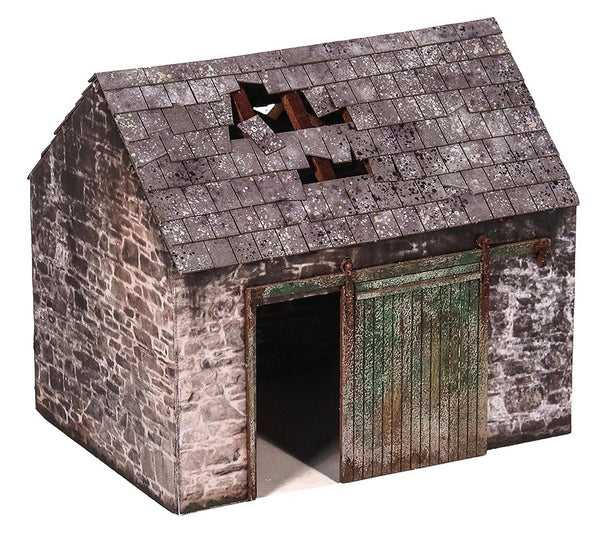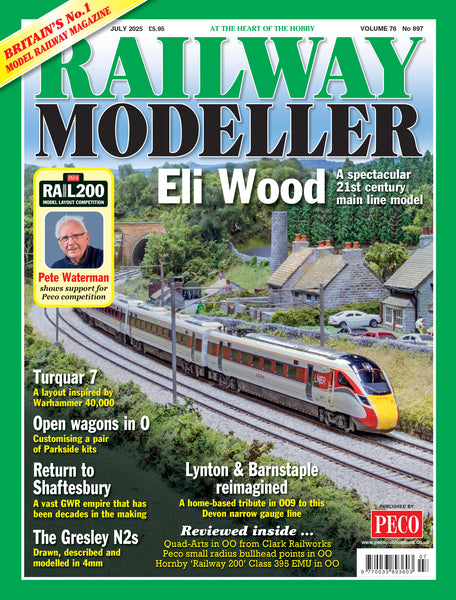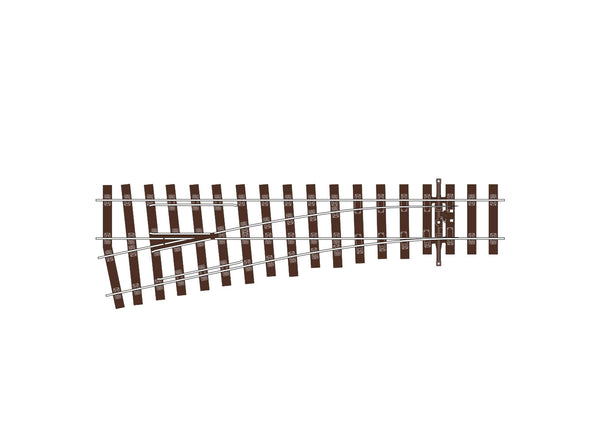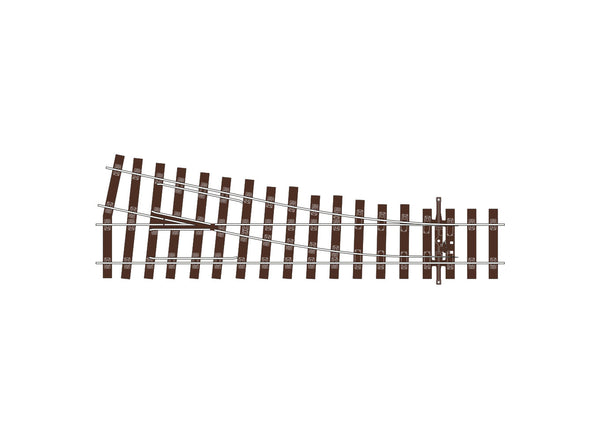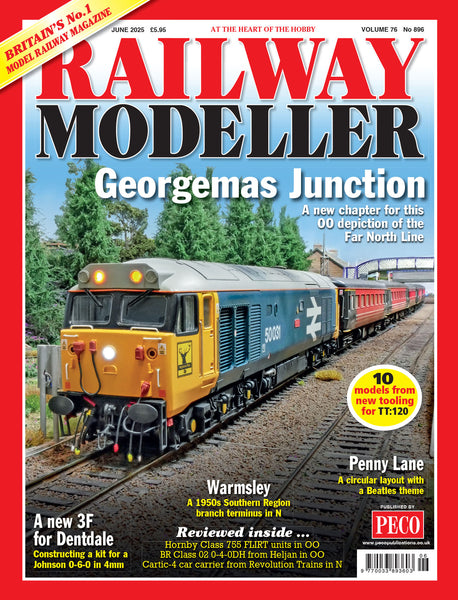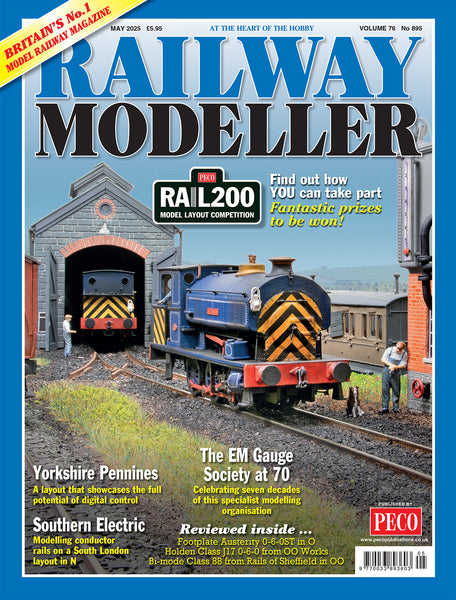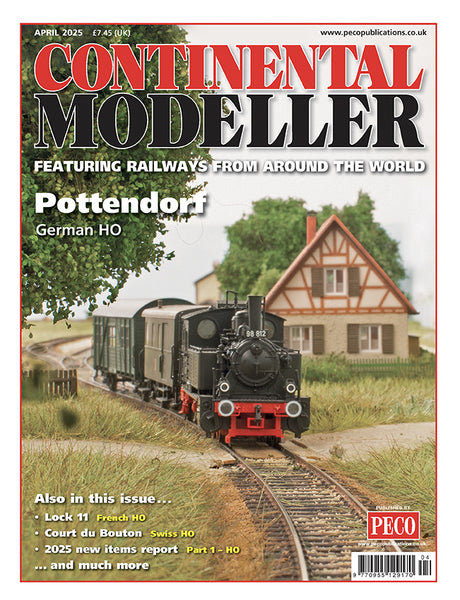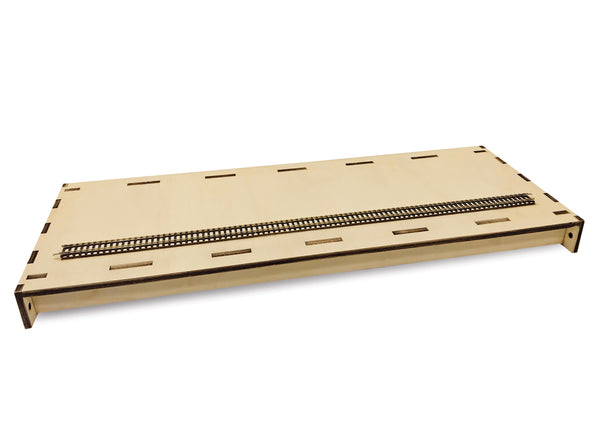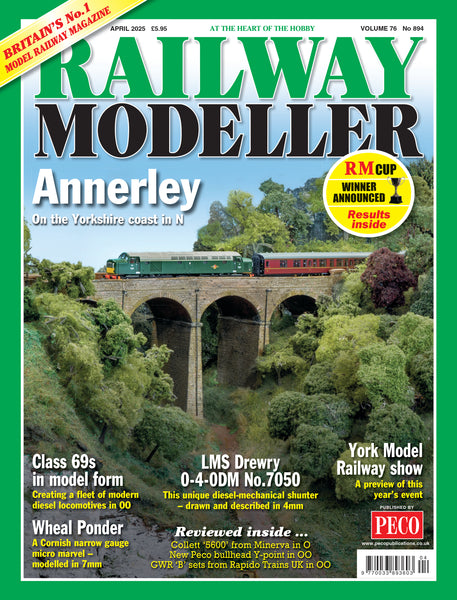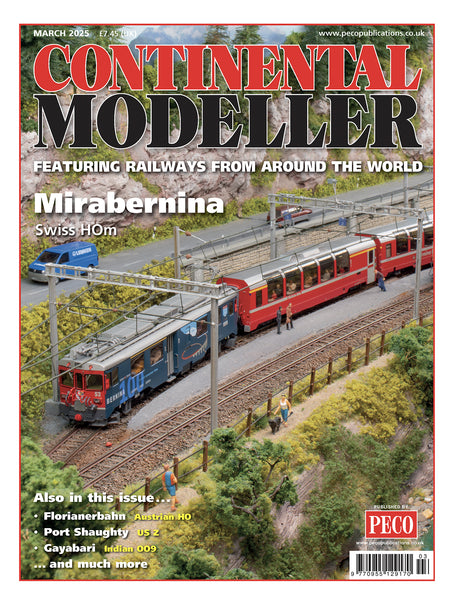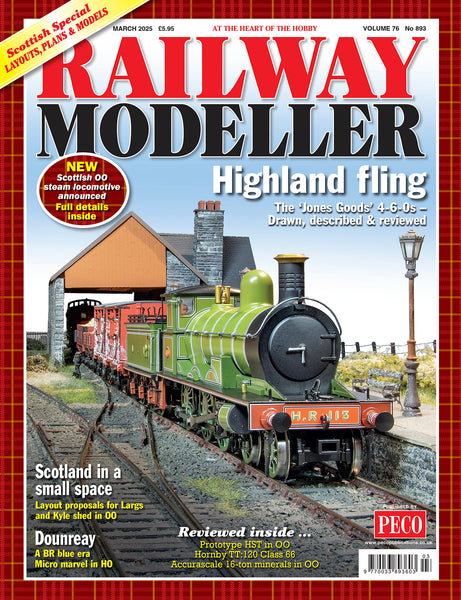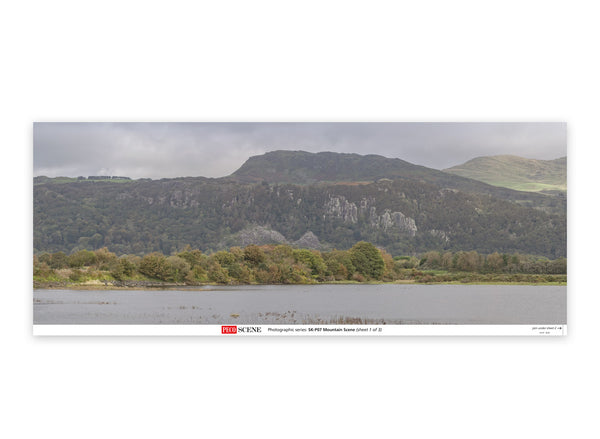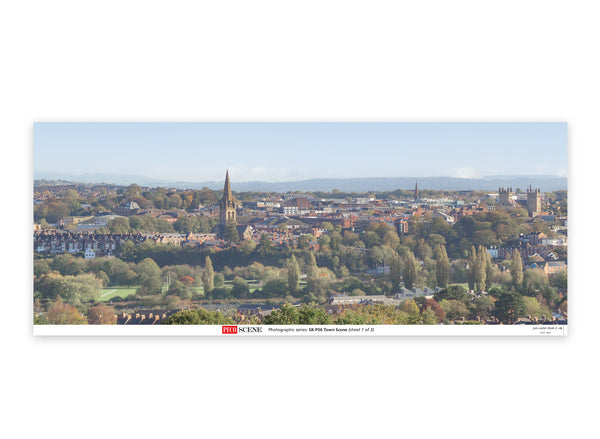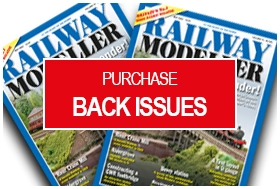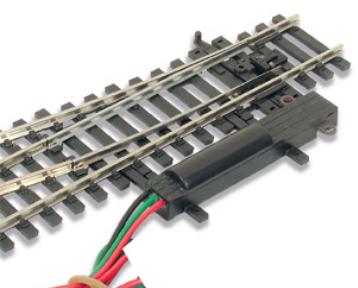DURCHSUCHEN SIE PECO-PRODUKTE
Stöbern Sie durch unser komplettes Produktportfolio.
2642 Products Found
RAILWAY MODELLER September 2025 Vol.76 No.899
RAILWAY OF THE MONTH
Buckhorn Weston
Maurice Lockwood describes how he created this extensive loft-based layout in 00 gauge, which plays host to a vast array of BR Southern Region steam-hauled services of the late 1950s to mid-1960s period.
PLAN OF THE MONTH
Island steam in TT:120
With PECO announcing a trio of laser-cut kits based on structures at Ventnor West, which will complement the forthcoming Hornby models of an Isle of Wight 'Terrier' and four-wheel coaches, modelling this station in 1:120 is set to become tantalisingly straightforward ...
PLUS ALL THE LATEST NEWS & REVIEWS...
LNER 12ton Obstwagen
500 dieser Transporter wurden in den 1930er Jahren für den umfangreichen LNER-Fruchtverkehr gebaut, der hauptsächlich aus East Anglia sowie Harwich, Hull und Leith stammte. Möglicherweise dienten sie auch außerhalb der Vegetationsperiode dem allgemeinen Verkehr und hielten bis in die 1960er Jahre. Transfers für LNER und BR. Diese fein geformten Wagenbausätze aus Kunststoff werden komplett mit Rädern und Lagern mit Steckachse, 3-Glieder-Kupplungen und Transfervorrichtungen geliefert. Dieser Bausatz wird mit vorgefärbten Formteilen geliefert, obwohl das Erscheinungsbild durch Lackieren verbessert werden kann. Gegebenenfalls sind zusätzliche Teile enthalten, die eine Modellierung des Fahrzeugs unter Einbeziehung von Modifikationen ermöglichen, die an den Prototypen während ihrer Nutzungsdauer vorgenommen wurden.
Special Edition OO-9 Goods Train Pack
Alle Eisenbahnunternehmen verfügten über einen eigenen Bestand an Fahrzeugen für den Transport von Gütern und Gütern innerhalb ihres Streckennetzes und bei Bedarf auch auf die Strecken anderer Unternehmen. Diese wurden bei der Verstaatlichung in die British Railways integriert; Einige von ihnen sollten im Zuge der Sektorisierung noch einmal neu gestaltet werden, da das Netzwerk darauf vorbereitet war, wieder in Privatbesitz überzugehen. Alle Peco-Wagen verfügen über freilaufende Räder mit Steckachsen. Die ELC-Kupplung ist zwar mit den Standard-N-Spur-Kupplungen kompatibel, sorgt jedoch für einen realistischen Abstand zwischen den Fahrzeugen und ermöglicht die Verwendung des elektromagnetischen Entkopplers PL-25 zum Fernabkuppeln.
Special Edition OO-9 Passenger Train Pack
Alle Eisenbahnunternehmen verfügten über einen eigenen Bestand an Fahrzeugen für den Transport von Gütern und Gütern innerhalb ihres Streckennetzes und bei Bedarf auch auf die Strecken anderer Unternehmen. Diese wurden bei der Verstaatlichung in die British Railways integriert; Einige von ihnen sollten im Zuge der Sektorisierung noch einmal neu gestaltet werden, da das Netzwerk darauf vorbereitet war, wieder in Privatbesitz überzugehen. Alle Peco-Wagen verfügen über freilaufende Räder mit Steckachsen. Die ELC-Kupplung ist zwar mit den Standard-N-Spur-Kupplungen kompatibel, sorgt jedoch für einen realistischen Abstand zwischen den Fahrzeugen und ermöglicht die Verwendung des elektromagnetischen Entkopplers PL-25 zum Fernabkuppeln.
CONTINENTAL MODELLER August 2025 Vol.47 No.8
In this months issue...
RAILWAY OF THE MONTH - SAINT-BERNARD
Thomas Bossonet presents his popular French HO exhibition layout, a rural terminus in the steam era which includes many distinctive local features.
GREIFENBACHTALBRÜCKE
The late Jochen Klinger and Jens Petermann created an impressive HOe display showing what was once the highest narrow gauge railway bridge in Saxony.
PLAN OF THE MONTH - MEGSDORF
Southern Germany in the snow - Norman Raven describes his family's latest HO exhibition layout, named and presented in memory of his late wife.
+PLUS!
All the latest news, reviews and layouts from around the world!
GWR-Heimsignal
Teil der „Quick Assembly“-Signalfamilie von Ratio. Damit können Sie schnell und einfach Heim- und Fernsignale senden. Dazu gehören Signalbetätigungskabel und Hebel. Mit diesem Kit können Sie ein GWR-Heimsignal nachbilden. Das Kit enthält vorgefärbten Signalarm, Kleber und Farben, die zur Vervollständigung des Modells erforderlich sind.
GWR-Heimsignal
Teil der „Quick Assembly“-Signalfamilie von Ratio. Damit können Sie schnell und einfach Heim- und Fernsignale senden. Dazu gehören Signalbetätigungskabel und Hebel. Mit diesem Kit können Sie ein GWR-Heimsignal nachbilden. Das Kit enthält vorgefärbten Signalarm, Kleber und Farben, die zur Vervollständigung des Modells erforderlich sind.
RAILWAY MODELLER August 2025 Vol.76 No.898
RAILWAY OF THE MONTH
The Dial Hill Railway
David Stockwell recounts the childhood influences that led to him modelling the Southern Railway-operated 1' 111h" gauge Lynton & Barnstaple Railway in 16mm scale, complete with an impressive replica of the line's Chelfham Viaduct.
PLAN OF THE MONTH
Pure nostalgia!
Thomas Burnham proposes an intensive 00 gauge plan using Peco Setrack components, which seeks to rekindle the excitement of Hornby Dublo layouts from the 1950s and 1960s.
PLUS ALL THE LATEST NEWS & REVIEWS...
CONTINENTAL MODELLER July 2025 Vol.47 No.7
In this months issue...
RAILWAY OF THE MONTH - ST0RDAL
From Hell to Dovrefjell - ModelSpoorGroep Valkenswaard introduce their Norwegian HO exhibition layout, an imaginary location chosen to include typical features.
CJ @ 13
Emmanuel Nouaillier demonstrates more of his techniques for intricately detailed structure modelling.
PLAN OF THE MONTH - SAINT-DESERT
A wayside station on a former PLM secondary line - Regis Deroussin introduces his home HO layout, which manages to include a station, a junction, and an impressive viaduct, in a reasonable space.
+PLUS!
All the latest news, reviews and layouts from around the world!
CONTINENTAL MODELLER June 2025 Vol.47 No.6
In this months issue...
RAILWAY OF THE MONTH - VONECHE
On the Athus - Maas line: MSC De Kempen present their new Belgian HO exhibition layout, set in Epoch Ill-IV to allow steam and diesel traction.
BOUY-A-BEZE
A seaside town served by a metre gauge secondaire - MSC Het Spoor vzw introduce their HOm evocation of a French coastal light railway.
PLAN OF THE MONTH - KINZIGTAL
German HO in the loft - Ian David describes his layout, which has been developed in two stages.
+PLUS!
All the latest news, reviews and layouts from around the world!
CONTINENTAL MODELLER May 2025 Vol.47 No.5
In this months issue...
RAILWAY OF THE MONTH - POTTENDORF
IN THE CÉVENNES - passing through the Massif Central, a set of three linked French N scenes.
BYRHH
BYRHH – part 2: Emmanuel Nouaillier crafts a scene around – and within – a product promoting a famous French brand.
PLAN OF THE MONTH - ILLIUM
NORDERNBURG – a German N permanent layout.
+PLUS!
All the latest news, reviews and layouts from around the world!
Cricketspieler
Das Paket enthält 15 Figuren (11 verschiedene Feldspieler und Bowler, 2 Schlagmänner, 2 Schiedsrichter und 1 Paar Wickets).
RAILWAY MODELLER July 2025 Vol.76 No.897
RAILWAY OF THE MONTH
Eli Wood
Eric Farragher constructed this exhibition layout, designed with a double track continuous run format, to run modern day passenger and freight workings through a rural landscape.
PLAN OF THE MONTH
A Plaster Mill
Clive Baker describes this compact EM gauge model, inspired by shunting activities at the plaster mill of J C Staton & Son, at Tutbury in Staffordshire.
PLUS ALL THE LATEST NEWS & REVIEWS...
OO Bullhead Small Radius Turnout - Left Hand
The PECO Streamline OO Bullhead track range has shaped up to be a very comprehensive system comprising flexible track, bullhead joiners, buffer stop, large radius, medium radius turnout, a crossing, double & single slips, Y turnouts and now Small Radius Turnouts. There's enough there already for modellers to build a truly authentic steam-to-diesel transition period layout.
- PECO Streamline OO Bullhead Small Radius Turnout, Unifrog
- Shares the same geometry as the existing Streamline Code 100, 75 flat bottom tracks systems
- Compatible with existing Bullhead system
- Uses standard SL-110 Code 75 rail joiner or the SL-114 Bullhead rail joiner
- Length 185mm
- Radius 610mm
- Frog angle 12 degrees
- Unifrog
- High quality nickel silver rail for all rail parts, for optimal electrical conductivity
- An excellent track component where space restrictions prevent standard turnouts being used.
OO Bullhead Small Radius Turnout - Right Hand
The PECO Streamline OO Bullhead track range has shaped up to be a very comprehensive system comprising flexible track, bullhead joiners, buffer stop, large radius, medium radius turnout, a crossing, double & single slips, Y turnouts and now Small Radius Turnouts. There's enough there already for modellers to build a truly authentic steam-to-diesel transition period layout.
- PECO Streamline OO Bullhead Small Radius Turnout, Unifrog
- Shares the same geometry as the existing Streamline Code 100, 75 flat bottom tracks systems
- Compatible with existing Bullhead system
- Uses standard SL-110 Code 75 rail joiner or the SL-114 Bullhead rail joiner
- Length 185mm
- Radius 610mm
- Frog angle 12 degrees
- Unifrog
- High quality nickel silver rail for all rail parts, for optimal electrical conductivity
- An excellent track component where space restrictions prevent standard turnouts being used.
RAILWAY MODELLER June 2025 Vol.76 No.896
RAILWAY OF THE MONTH
Barrihandle
Inspired by the late lain Rice's layout plan Gairloch, the Wirral & North Wales Model Railway Group created this fictional fishing port on the west coast of Scotland - complete with a boat that sails around the harbour. Alisdair Macdonald tells its story.
PLAN OF THE MONTH
Warmsley
Peter Johnston describes his latest N gauge exhibition layout, a Southern Region branch line terminus set in the picturesque 195Os England of Agatha Christie ...
PLUS ALL THE LATEST NEWS & REVIEWS...
RAILWAY MODELLER May 2025 Vol.76 No.895
RAILWAY OF THE MONTH
Splott
Paul Spencer describes how he constructed this 1980s diesel era layout, set against a Cardiff industrial backdrop and digitally operated. It will be appearing at the EM Gauge Society Spring show on 10 & 11 May.
PLAN OF THE MONTH
Competition Cameos
A selection of ideas in different scales for the PECO RAIL200 competition, with the challenge to build a layout or diorama on a baseboard of just 291h" x 12".
PLUS ALL THE LATEST NEWS & REVIEWS...
CONTINENTAL MODELLER April 2025 Vol.47 No.4
In this months issue...
RAILWAY OF THE MONTH - POTTENDORF
You cannot better a good idea: Tim Hale has revisited a favourite theme - a Bavarian branch in the Deutsche Bundesbahn period, modelled in HO.
LOCK 11
Jan van Munster presents his French HO exhibition layout, which has an unusual working feature inspired by the Vallee des Eclusiers in the Vosges.
PLAN OF THE MONTH - ILLIUM
On the Colorado 3' gauge: Mick Savage describes his fixed room-filling American Sn3 layout.
+PLUS!
All the latest news, reviews and layouts from around the world!
Kitbuilder-Werkzeugset
Ein speziell ausgewählter Werkzeugsatz von erfahrenen Modellbauern hier bei PECO für den Bausatzbau. Diese Werkzeuge sind für alle Modellbauer von entscheidender Bedeutung. Dazu gehört auch Expertenwissen in Form eines nützlichen Leitfadens, der Ihnen von den Experten von Railway Modeller zur Verfügung gestellt wird.
Beinhaltet:
- Anguss- und Kunststoffschneider
- Feine Pinzette
- Abbrechmesser mit 10 Ersatzklingen
- Set mit 4 Nadelfeilen
- Pinsel der Größe Nr. 0
- Pinsel der Größe Nr. 4
- A4-Schneidematte
- 150 mm/6 Zoll Stahlmaßstab
- Zeigt Ihnen, wie es geht: „Bausatzbau für Anfänger“
RAILWAY MODELLER April 2025 Vol.76 No.894
RAILWAY OF THE MONTH
Annerley
In reality, the Hull to Scarborough line leaves the coast at Bridlington and heads north to Filey. But David Harrison chose to imagine how the route would have looked, had it continued along the coast to Flamborough Head.
PLAN OF THE MONTH
Leominster
This N gauge layout, being built by the Marches Model Railway Group, is due to go on public display in April, in the town whose station it depicts. Peter Dennis tells the story so far.
PLUS ALL THE LATEST NEWS & REVIEWS...
CONTINENTAL MODELLER March 2025 Vol.47 No.3
In this months issue...
RAILWAY OF THE MONTH - MIRABERNINA
On the Rhatische Bahn Bernina line - Eddy de Wilde has modelled a fictional but plausible location on the Swiss metre gauge in HOm.
PETENNE - Part 2
Robert Macchi continues the detailed account of his Italian HO DCC-controlled permanent layout.
PLAN OF THE MONTH - FALLERSTADT
Dave Harris introduces his new DCC-controlled German HO exhibition layout - a busy suburban station with trains, trams, and buses.
+PLUS!
All the latest news, reviews and layouts from around the world!
RAILWAY MODELLER March 2025 Vol.76 No.893
RAILWAY OF THE MONTH
Dallas
John Wise describes how he created this imagined portrayal of a Great North of Scotland Railway branch terminus, set in the 1950s.hard Lambert describes the background to this imagined main line station, which is set on the Oldham Loop line between Manchester Victoria and Rochdale, in former Lancashire & Yorkshire Railway territory.
PLAN OF THE MONTH
Scotland in a small space
Toby Jennings suggests two compact Scottish layout plans in 00 gauge, both suitable for the new Highland Railway 'Jones Goods' 4-6-0 from Rapido Tr
PLUS ALL THE LATEST NEWS & REVIEWS...
Fotografische Hintergrundkulisse im Flusstal
Wir freuen uns, Ihnen unser neues fotografisches Backscene-Sortiment vorstellen zu können. Das erste ist eine Flusstalszene, die auf dem River Axe in Devon basiert. Die drei separaten Platten werden in einem Rohr mit quadratischem Querschnitt geliefert und passen perfekt zusammen, um eine durchgehende Bahn von 2400 mm (95 Zoll) und einer Höhe von 333 mm (13 Zoll) zu bilden. Zukünftige Hinterszenen werden an beiden Enden übereinstimmen, was längere Szenenläufe über die gesamte Länge einer Anlage ermöglicht.
Fotografische Hintergrundkulisse im Flusstal
Wir freuen uns, Ihnen unser neues fotografisches Backscene-Sortiment vorstellen zu können. Das erste ist eine Flusstalszene, die auf dem River Axe in Devon basiert. Die drei separaten Platten werden in einem Rohr mit quadratischem Querschnitt geliefert und passen perfekt zusammen, um eine durchgehende Bahn von 2400 mm (95 Zoll) und einer Höhe von 333 mm (13 Zoll) zu bilden. Zukünftige Hinterszenen werden an beiden Enden übereinstimmen, was längere Szenenläufe über die gesamte Länge einer Anlage ermöglicht.


